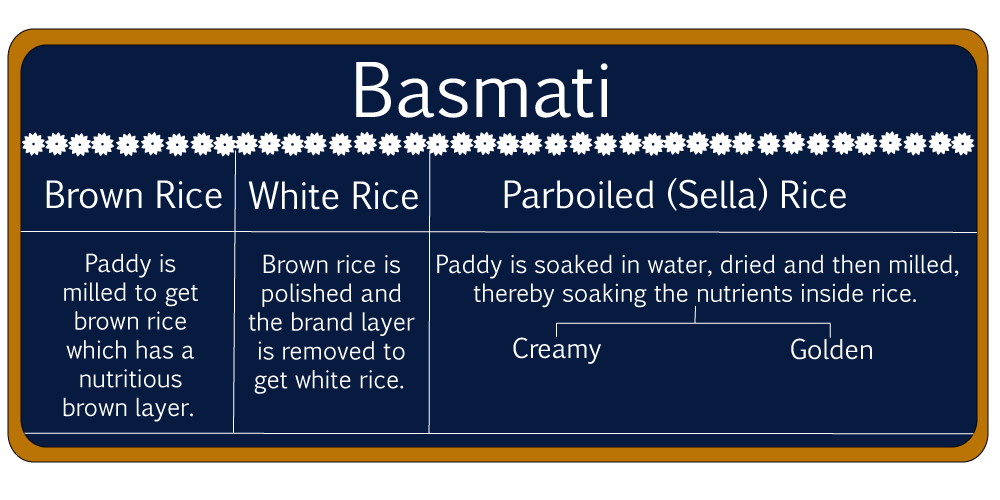About Basmati
About Basmati
Known to be the world’s most precious rice strain, basmati has a special meaning for us at SBM International. It is one of the most treasured grains, and is grown only once a year in the Indo-Gangetic Plain beneath the Himalayan sub ranges. The fertile alluvial soil, fresh cold air and the sweet water from the ranges contribute primarily to the unique characteristics associated with the grain. It is a remarkably long variety of rice and has a distinct aroma and discrete nutty taste. When cooked, the Basmati is longer, lighter and fluffier than standard white rice and does not stick together.
Like Champaign of Champaign, Basmati also is geographically indexed to the northern region on the Indian Sub-continent, which includes Basmati growing areas in the states of Uttrakhand, Punjab, Haryana, Uttar Pradesh, adjoining areas of Jammu, Kashmir, Himachal Pradesh and Delhi.
Quite like wine, it gets better with age. We age Basmati from a minimum of one to two years, to enhance and intensify it’s taste, aroma and cooking characteristics. Under good conditions it keeps well for up to 10 years. Old rice cooks up fluffy, with separate grains and releases a pleasant aroma.

Basmati can be consumed in the multiple forms listed below. The consumption is typically based on recipe, eating habits, health needs and cultural geographical usage.
There is a multitude of variants available at the farm level. For ease of selection, they are typically categorized in the following 3 broadways.
- Pusa 1121 Basmati
- Pusa Basmati-1
- Traditional Basmati
Pusa stands for Pusa Institute in Delhi is a commonly referred name for the Indian Agricultural Research Institute (IARI) New Delhi. IARI is one of the premier research institutes of Indian Council of Agricultural Research, which comes under the Ministry of Agriculture, Govt. of India. It is headed and managed by India’s top scientists who work continuously on maintaining optimal genetic pedigree of India’s agricultural seeds. It is the developer of the most popular Pusa Basmati 1 and Pusa 1121 Basmati.
Pusa 1121 Basmati
The latest entrant to the basmati basket, Pusa 1121 was also developed by Pusa Institute in April 2003 but has nothing in common (attribute wise) to the “Pusa Basmati” above. It is the longest basmati grain in the world- before as well as after cooking and gives 30% more volume than any other basmati variety. This variant can be recognized by its unique aroma and special sweet taste. This variant has excellent global acceptability that spans Middle East, Iran, Australia, Africa, Canada and even USA. It commands the most premium price and is most preferred amongst farmers today.

Pusa Basmati-1
A boon for farmers and their growing concerns, this variety has been developed after R&D from the Pusa institute in the early 1990’s. Keeping the limited cultivation area and the ever increasing demand in mind, the research yielded ways of producing a greater quantity on the same land through the natural process of hybridization. This variety revolutionized the Indian basmati industry and gained India’s entry to many inaccessible markets. The popularity and production increased multifolds in the decade that followed its development.

Traditional Basmati
This common phrase is used to refer to older varieties that are in still production. Two popular varieties 370 and HBC 19 amongst others are collectively called Traditional. Due to their lower yield they have gradually phased away and have been replaced by a newer variety – CSR-30. Today, a majority of export is CSR-30- which is a recently evolved variety. It has the lowest yield compared to the two varieties listed above.



